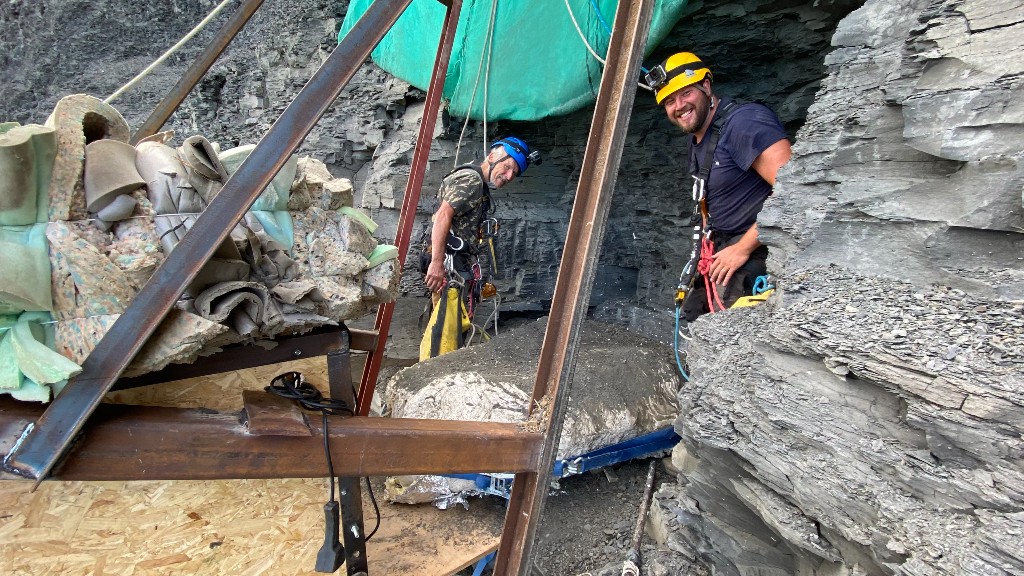Museums & Institutions
A U.K. Museum Launches a Fundraiser to Excavate a Prehistoric Sea Monster
The massive body of a pliosaur could be lost to rapid cliff erosion, warns the museum’s founder.

If you’ve recently visited the Etches Collection Museum of Jurassic Marine Life, in Kimmeridge, on England’s southern coast, you may have seen an imposing display: a six-foot-long skull of a pliosaur, a carnivore with powerful jaws that grew to some 30 feet in length, that went on view in January. The creature lived from the earliest Jurassic period to the early Late Cretaceous and may have fed on creatures like sharks and ichthyosaurs.
But the rest of the creature’s remains are still in the same cliff face, high above a Dorset beach, where the head was found, and the museum is embarking on a fundraising campaign to enable them to recover the creature’s body.
“The excavation of the remaining Pliosaur body is a race against time and nature, so this is a priority for me, especially since we could lose important pieces of the specimen due to rapid cliff erosion,” said museum founder Steve Etches.
The pliosaur skull was featured on the BBC program Attenborough and The Giant Sea Monster, which aired January 1, and is on permanent display.
At time of publication, 173 supporters have raised £6,518 ($8,226). The money raised will go toward costs like preparation, excavation, preservation, scientific study, gallery updates, and education. The museum has not published a specific goal for the fundraising campaign.
“This really is the most complete Pliosaur skull that has been discovered to date and it is one of, if not the most important specimen ever to come out from the Kimmeridge clay, and globally, this is one of the best specimens you’ll see,” says Etches.
Formerly a plumber, Etches began collecting fossils in Kimmeridge more than four decades ago, when he was five years old; the collection, all from the same locale, now includes some 2,800 specimens, about 10 percent of which are on display. He has garnered a number of distinctions, including being made a Member of the Most Excellent Order of the British Empire (MBE) in 2014 in recognition of his services to paleontology. Several creatures have even been named after him.
The $6.3-million museum building, designed by Kimmeridge’s Kennedy O’Callagahan Architects, was opened in 2016 to house Etches’s collection, which is still growing as he hunts for more fossils.
“Each fossil has a different story,” Etches told the Dorset Echo when the museum opened. “The stuff is completely new to science and a glimpse into a time that hasn’t really been concentrated on before.”





